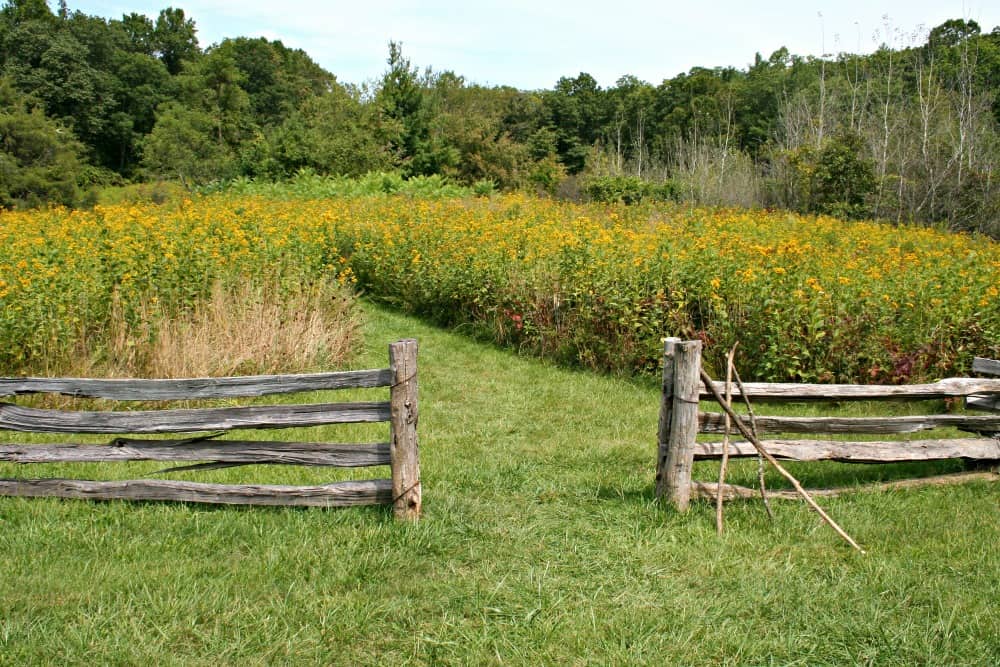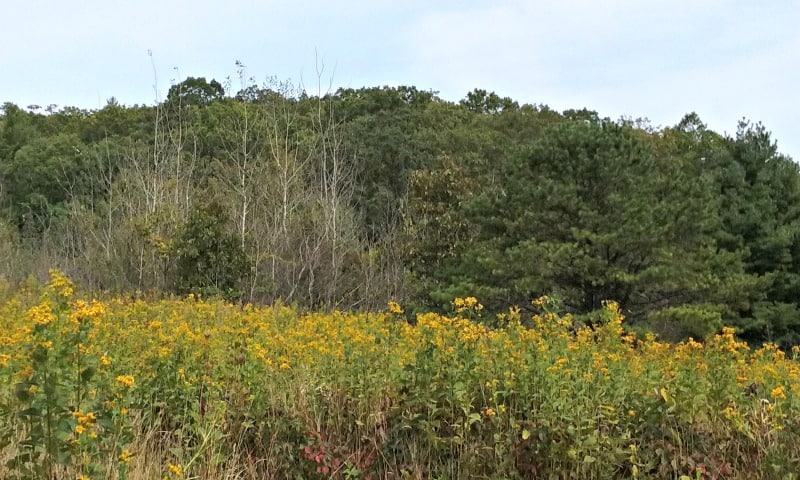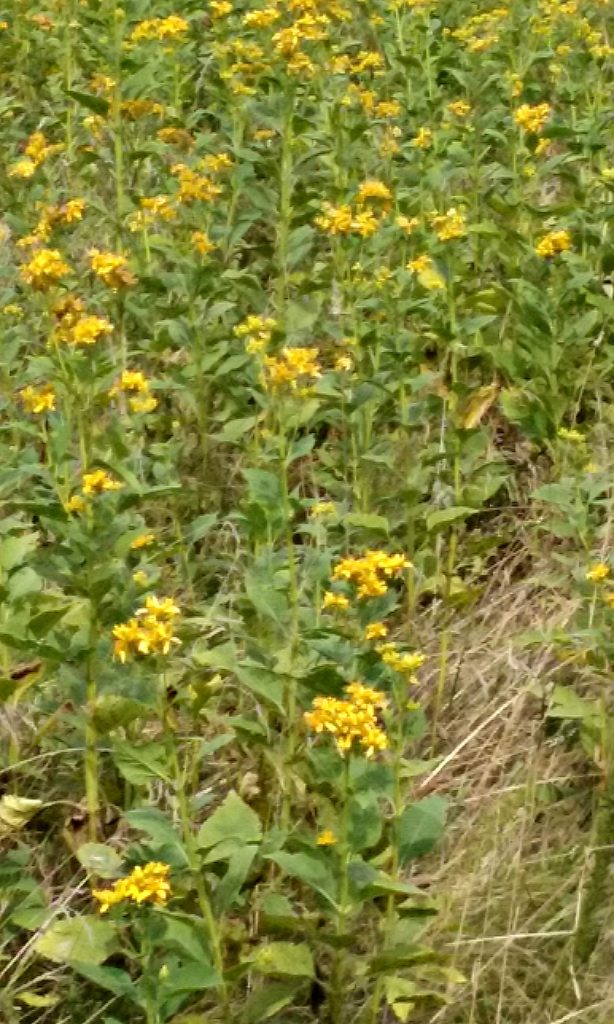
This past Sunday, Hubby and I drove to the Blue Ridge Parkway and did a little hiking. The trail above is called the Smart Loop Trail and it is gorgeous. It wanders for 2.6 miles around a large picnic area and campground, but it traverses woods, streams, and a large wildflower meadow.

It was here in the wildflower meadow that I paused for a while to examine some of the plants. There was probably an acre or more of meadow flowers – I could identify goldenrod, milkweed, red clover and Queen Anne’s lace. But how many other flowers bloomed that I could not name?

My idea of heaven is a wildflower field like this. Hiking on the Smart Loop Trail, Virginia.
When we returned home, I pulled a trusted resource from the shelf – Botany in a Day by Thomas J Elpel. The book’s title is somewhat of a misnomer. I’m not sure it’s possible to learn botany in a day!
What this book does, however, is teach basic botany by identifying commonalities among plant families. Once you learn some of the basic patterns among the plants, you can identify many species.
I can identify asters, mints, and rose families of plants. During our hike, I identified a lily member but it was past blooming so I couldn’t get a better ID. In the meadow, there were other plants, probably aster family – a good guess, considering there are 45,000 plants in that family!
You’re probably wondering what good it is to identify plants, other than to satisfy your curiosity. Many plants provide edible or medicinal value. If you know your plants and you’re stuck in the woods, knowing this information could mean the difference between life or death.
In the garden, knowing the difference among plant families can help you with things like weed control, fertilization, growing conditions and more.

I love being able to identify the plants, animals, and insects around me when I am out walking or hiking. As a child, my mother would teach me the names of birds and trees during our walks together. Today, I can easily identify flora and fauna that is identical to what I learned back in New York: maples, oaks, dogwoods, azaleas, pine trees, hemlock hedges, robins, cardinals, blue jays, squirrels, sparrows. Now I am adding to my lexicon of wildlife by learning more in my spare time.
If you are interested in learning a quick method of plant identification, I highly recommend Botany in a Day. Identifying wildflowers is a fun way to enjoy the great outdoors.
Keep growing!




